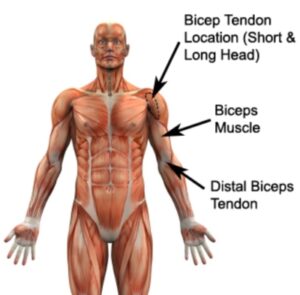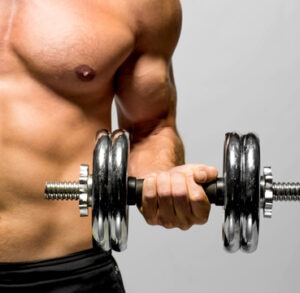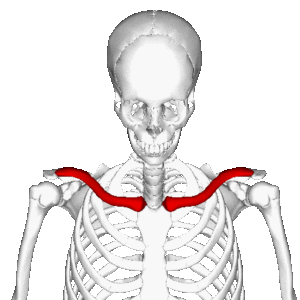 A scapula fracture refers to a break in the shoulder blade bone at the back of the shoulder. This type of injury is quite rare, accounting for just one percent of all fractures.
A scapula fracture refers to a break in the shoulder blade bone at the back of the shoulder. This type of injury is quite rare, accounting for just one percent of all fractures.
Board certified orthopedic surgeons Dr. Steven Thomas and Dr. Gregory Bigler provide scapula fracture treatments to patients in Las Vegas, Nevada and surrounding locations across the horizon.
Symptoms
Symptoms of a broken shoulder blade would include a sudden pain in the back of the shoulder during the impact as well as rapid inflammation. The patient will feel pain if they attempt to move the upper back or shoulder. The patient will also struggle to lift their arms to their head height. They will feel tenderness, especially over the shoulder blade.
Causes
The patient can experience a scapula fracture or broken shoulder blade if there is a direct impact to the scapula from a blunt article, or due to a fall onto the shoulder or arm. A common cause of this injury is car accidents.
Treatment Approach
Patients should seek prompt medical attention if they fear a scapula fracture. The surgeon may use an x-ray to confirm the fracture and understand how extensive the injury or displacement is. The surgeon will also examine the patient to check for symptoms of vascular or neural injury such as tingling, numbness, weakness or a slower pulse in the arm.
An experienced orthopedic surgeon will treat a scapula fracture conservatively and try to avoid surgery. In this condition, bone displacement is rare as the muscles hold the two (or multiple) parts firmly together.
The surgeon may decide to immobilize the arm in a sling to decrease the arm’s weight on the shoulder. The patient will be recommended to perform early range of motion exercises to maintain movement and avoid stiffness.
A majority of scapular fractures heal in nearly six weeks. After the patient feels pain-free, they can use strengthening exercises restore their total strength and maintain healthy patterns of movement at the shoulder. If the patient’s bone fractures in multiple pieces or there is a significant displacement in the bones, then they may need surgery to fix the scapula back together via pins or wires.
Surgical Treatment
The patient may require surgery if they experience the following kinds of shoulder blade fractures:
- Fractures of the glenoid articular surface with bone displacement
- Fractures of the scalpular neck with substantial angulation
- Fractures of the acromion process that results in the impingement syndrome
During the surgery, the surgeon will initially reposition the bone fragments in their normal alignment. They will then help the fragments hold together by attaching metal plates with special screws to the outer surface of the bone.
After the surgical procedure, the patient will undergo a period of rehab to enable a safe and healthy recovery of the treated shoulder.
Pain Management
The surgeon will prescribe pain meds for short-term relief after the shoulder blade injury or for a brief duration post-surgery. The surgeon may prescribe a combination of medications such as NSAIDs, Opioids, and local anesthetics for pain management. They will minimize the requirement for opioids as they can become addictive.
Thomas & Bigler Knee and Shoulder Institute, led by board-certified orthopedic surgeons, provides scapula fracture treatments to patients in Las Vegas, Nevada and other towns and cities in The Sagebrush State.
If you would like to schedule an appointment or learn more about the Knee and Shoulder Institute procedures & treatments performed by Las Vegas, Nevada board certified surgeons Steven C. Thomas, MD and Gregory T. Bigler, MD. call (702)

 The supraspinatus muscle is located along the shoulder blade’s top part and inserts at the top of the humerus bone. It is among the four rotator cuff muscles in the body and is used for lifting the arm up sideways. It is also used significantly for participating in throwing sports because the muscle holds the arm in the shoulder joint when an athlete makes a throw.
The supraspinatus muscle is located along the shoulder blade’s top part and inserts at the top of the humerus bone. It is among the four rotator cuff muscles in the body and is used for lifting the arm up sideways. It is also used significantly for participating in throwing sports because the muscle holds the arm in the shoulder joint when an athlete makes a throw. A direct impact on the shoulder or falling onto an outstretched hand can lead to a fractured neck of the humerus. It is a bone that is located at the top of the arm, which forms the glenohumeral joint after fitting into shoulder socket or glenoid.
A direct impact on the shoulder or falling onto an outstretched hand can lead to a fractured neck of the humerus. It is a bone that is located at the top of the arm, which forms the glenohumeral joint after fitting into shoulder socket or glenoid.  The pectoralis muscle, which is located at the front of the chest, is a large and strong muscle that rotates the arm inward. The muscle’s weak point is the tendon where it is attached to the arm bone. It is the point that is likely to get ruptured during weight training activities, such as a bench press.
The pectoralis muscle, which is located at the front of the chest, is a large and strong muscle that rotates the arm inward. The muscle’s weak point is the tendon where it is attached to the arm bone. It is the point that is likely to get ruptured during weight training activities, such as a bench press.  The biceps muscle bifurcates into two tendons at the shoulder, a long one and a short one. The long tendon lies over the top of the humerus bone and attaches right at the top of the shoulder blade. It can be impacted by a partial rupture that leads to pain at the shoulder front.
The biceps muscle bifurcates into two tendons at the shoulder, a long one and a short one. The long tendon lies over the top of the humerus bone and attaches right at the top of the shoulder blade. It can be impacted by a partial rupture that leads to pain at the shoulder front. Shoulder Sprain Treatment
Shoulder Sprain Treatment


 The collarbone, medically known as the human clavicle, is a short bone that connects the arms to the trunk. One can easily feel it by placing their hand on the area of the skin, which is right above the first rib. The clavicle can be easily seen in thin people.
The collarbone, medically known as the human clavicle, is a short bone that connects the arms to the trunk. One can easily feel it by placing their hand on the area of the skin, which is right above the first rib. The clavicle can be easily seen in thin people.